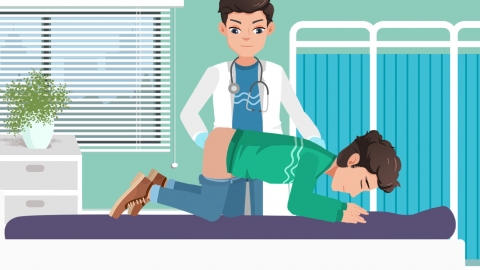What can be done about hemorrhoids?
Generally, hemorrhoids may be caused by prolonged sitting or standing, poor dietary habits, internal hemorrhoids, external hemorrhoids, mixed hemorrhoids, and other factors. Treatment options include general treatments and medication therapy, as directed by a physician. Detailed explanations are as follows:

1. Prolonged Sitting or Standing
Maintaining the same posture for extended periods, such as sitting or standing for long durations, can lead to poor venous return in the anal and rectal areas, causing blood stasis in the veins and subsequently hemorrhoids. It is recommended to change postures regularly—for example, getting up and engaging in light stretching or movement for 5–10 minutes every hour—to promote blood circulation. Additionally, maintaining regular physical exercise can help strengthen the pelvic floor muscles.
2. Poor Dietary Habits
Consuming overly refined foods that lack dietary fiber, along with insufficient water intake, can easily lead to constipation. Straining during bowel movements increases pressure in the anal and rectal regions, which can trigger hemorrhoids. Increasing dietary fiber intake—such as eating more vegetables, fruits, and whole-grain foods—and ensuring adequate hydration by drinking at least eight glasses of water daily can help maintain regular bowel movements.
3. Internal Hemorrhoids
Internal hemorrhoids may result from pathological changes or displacement of the supporting structures of the anal cushions, venous plexuses, or arteriovenous anastomoses. The main symptoms of internal hemorrhoids are bleeding and prolapse, typically without pain. Patients may also experience a feeling of anal heaviness or itching. Under a physician's guidance, medications such as diosmin tablets, hemorrhoidal suppositories, and compound alginic acid ester cream may be used for treatment.
4. External Hemorrhoids
External hemorrhoids may arise from pathological dilation of the venous plexus distal to the dentate line or thrombus formation. They mainly manifest as anal discomfort, dampness, and poor hygiene, sometimes accompanied by itching. Symptoms may also include thrombosis and subcutaneous hematoma. As directed by a physician, medications such as Ma Yinglong Musk Hemorrhoid Ointment, potassium permanganate solution for sitz baths, and Sophora japonica fruit pills may be used for treatment.
5. Mixed Hemorrhoids
Mixed hemorrhoids refer to the simultaneous presence of both internal and external hemorrhoids, often developing from internal hemorrhoids. Mixed hemorrhoids exhibit symptoms of both types, including bleeding, prolapse, and pain. Additional symptoms may include increased anal discharge and anal stenosis. Under a physician's recommendation, medications such as Dioscorea and Sophora japonica pills, Zhisuining tablets, and hemorrhoid capsules may be used for treatment.
In daily life, maintaining regular作息 and dietary habits, avoiding excessive fatigue and staying up late, is recommended. Regular physical exercise, such as anal sphincter exercises, should also be performed to strengthen the pelvic floor muscles.





